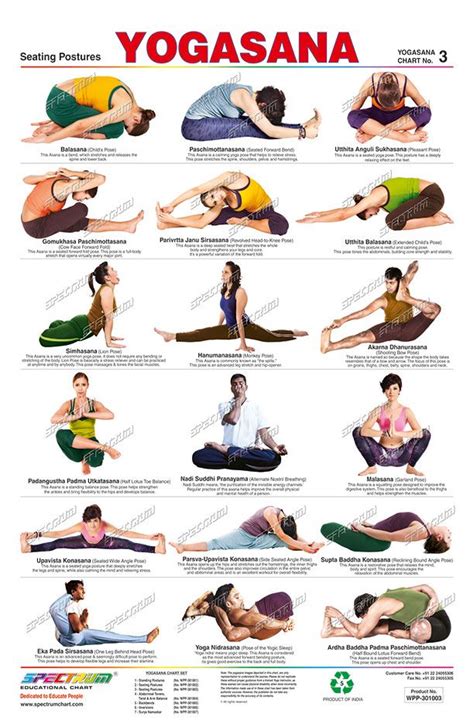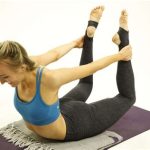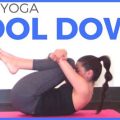Mastering 7 Advanced Yoga Asanas: A Comprehensive Guide for Strength, Balance, and Flexibility
Yoga is an ancient practice, but as the world of fitness evolves, so do the challenges practitioners seek. Advanced asanas (poses) are not only a test of physical prowess but also a way to push the boundaries of mental discipline and spiritual growth. Whether you are looking to test your limits or achieve a deeper connection with your body, these seven advanced asanas will challenge your strength, flexibility, and balance. In this guide, we’ll explore the intricacies of these poses, provide historical context, discuss their current relevance, and suggest practical applications for your routine.
Introduction
Yoga is widely known for its accessibility to practitioners of all levels, but as one progresses, so does the complexity of the poses. Advanced asanas are not merely about physical strength; they also require exceptional mental focus, body control, and alignment awareness. However, not all advanced asanas are created equal. Some are more focused on strength, others on flexibility, and some balance the two. This article explores seven of the most challenging asanas in depth, offers step-by-step guidance on how to master them, and explains the benefits they offer both physically and mentally.
Key Concepts
- Strength: Many advanced asanas require core, upper body, and leg strength to hold the pose in proper alignment.
- Balance: The ability to maintain equilibrium, especially in poses where limbs are extended or where the body is inverted.
- Flexibility: The ability to extend muscles and joints fully to achieve the correct posture.
- Breath Control: Managing your breath (pranayama) to aid in holding poses longer and with less strain.
- Mental Discipline: Yoga requires a calm mind and strong focus to succeed in advanced asanas.
Historical Context
Many of the most advanced asanas date back to early yogic texts like the Hatha Yoga Pradipika and Gheranda Samhita. These texts describe postures that, at the time, were seen as gateways to higher spiritual practices. For instance, Mayurasana (Peacock Pose) is described as a purification pose used to cleanse the body of toxins, while Sirsasana (Headstand) was hailed as the king of all asanas for its ability to bring mental clarity and calm. Over time, modern interpretations of yoga have expanded the understanding of these asanas, incorporating them into more fitness-focused practices, but their roots remain steeped in spiritual tradition.
Current State Analysis
In today’s fitness culture, advanced yoga poses are often used as benchmarks of physical capability. They have been integrated into various yoga styles, from traditional Hatha and Ashtanga to contemporary Vinyasa and Power Yoga. Practitioners strive to master these asanas for not only their aesthetic appeal but also the physical benefits they bring, such as improved muscle tone, balance, and coordination. However, with the rise of social media, these poses are sometimes taken out of context, and their spiritual or mental significance can be overshadowed by the quest for Instagram-worthy photos.
Practical Applications
Advanced asanas require consistent practice and preparation. Below are key techniques to incorporate into your yoga routine to build up to these poses:
- Core Strengthening: Engaging the core is critical for holding inversions and arm balances.
- Flexibility Training: Poses such as Hanumanasana (Full Splits) require gradual increases in flexibility over time.
- Breathing Exercises: Pranayama techniques help maintain focus and calm, especially in more demanding poses.
- Props: Blocks, straps, and walls can aid in learning the mechanics of advanced postures before performing them independently.
Case Studies
| Pose | Primary Focus | Physical Benefits | Common Mistakes |
|---|---|---|---|
| Mayurasana (Peacock Pose) | Arm strength, core stability | Improves digestion, strengthens arms and core | Incorrect hand placement, insufficient core engagement |
| Pincha Mayurasana (Forearm Stand) | Balance, arm strength | Enhances shoulder stability, boosts focus | Overarching back, poor alignment of elbows |
| Hanumanasana (Full Splits) | Flexibility | Opens hips, stretches hamstrings | Pushing too far too fast, lack of warm-up |
| Sirsasana (Headstand) | Balance, focus | Improves circulation, calms the mind | Excessive weight on the neck, poor core engagement |
| Kapotasana (King Pigeon Pose) | Back flexibility | Opens chest, strengthens lower back | Overextension of lower back, inadequate hip opening |
| Bakasana (Crow Pose) | Balance, arm strength | Strengthens arms and core, improves focus | Incorrect weight distribution, bent elbows |
| Natarajasana (Lord of the Dance Pose) | Balance, flexibility | Opens chest and shoulders, improves balance | Leaning too far forward, improper foot positioning |
Stakeholder Analysis
While advanced asanas are typically practiced by seasoned yogis, they appeal to a variety of stakeholders:
- Yoga Teachers: Incorporate advanced poses into classes to challenge students and highlight the benefits of disciplined practice.
- Fitness Enthusiasts: Use advanced asanas as milestones to achieve greater strength, flexibility, and body control.
- Wellness Brands: Promote yoga as a holistic fitness routine, featuring advanced poses in marketing and product lines (e.g., yoga mats, apparel).
Implementation Guidelines
To effectively incorporate advanced asanas into your yoga practice, consider the following steps:
- Progress Gradually: Start with preparatory poses and exercises to build strength and flexibility.
- Use Props: Blocks, straps, and walls can be invaluable for mastering alignment and balance before removing support.
- Focus on Form: Always prioritize proper alignment over depth or duration to prevent injury.
- Breath Control: Use pranayama techniques to maintain focus and control during challenging poses.
- Seek Instruction: Advanced poses often require hands-on adjustments, so consider working with a skilled teacher.
Ethical Considerations
As yoga becomes more commercialized, there are ethical concerns regarding the promotion of advanced asanas. Social media often highlights these poses as the epitome of yoga success, which can create pressure for practitioners to push their bodies beyond safe limits. Teachers and influencers have a responsibility to emphasize the importance of gradual progression, body awareness, and the mental aspects of yoga rather than focusing solely on physical achievement.
Limitations and Future Research
While advanced asanas offer numerous benefits, there are limitations to consider. Many poses require a high level of physical readiness, and not everyone will be able to achieve them, particularly without consistent practice. Moreover, research into the long-term effects of advanced asanas, especially on joints and ligaments, is still limited. Future studies should focus on understanding these impacts and developing guidelines for safe progression into advanced yoga.
Expert Commentary
As practitioners advance in their yoga journey, mastering difficult asanas can be both rewarding and challenging. However, it is essential to remember that yoga is not merely about achieving physical postures. The mental and spiritual benefits of yoga, such as improved focus, clarity, and inner peace, are often more profound than the physical rewards. Yoga teachers and advanced practitioners should always guide their students toward a holistic understanding of yoga, where strength, balance, and flexibility are tools for personal growth rather than end goals.








